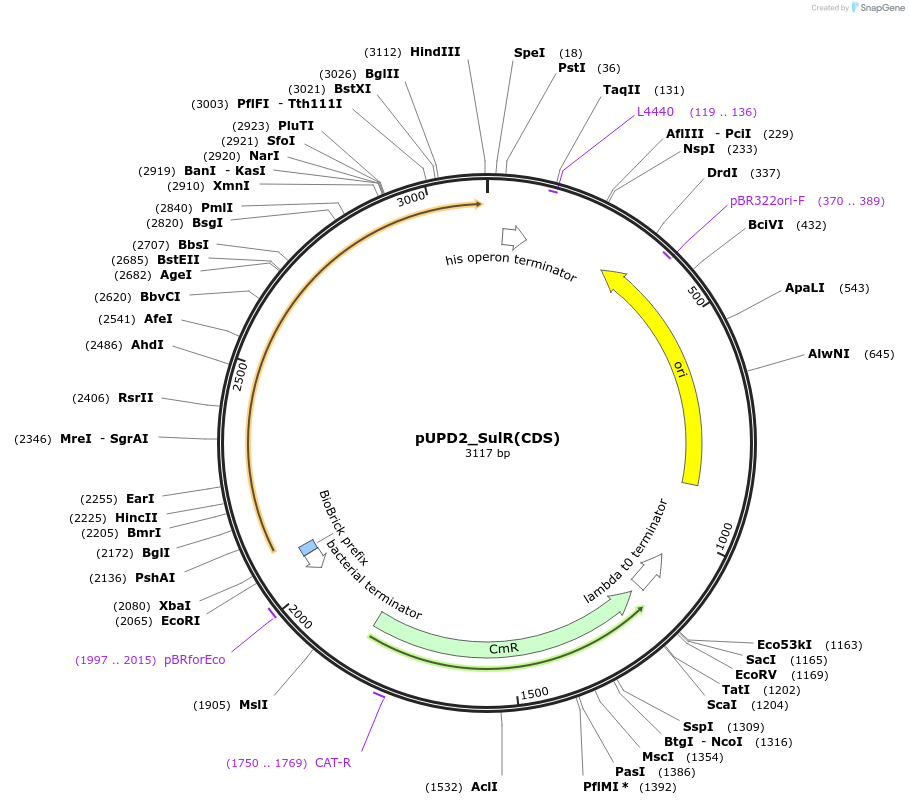pUPD2_SulR(CDS)
(Plasmid
#186423)
-
Purposeprovides sulfadiazine resistance (sulI) as a level 0 GoldenBraid part (CDS; B3-B4-B5)
-
Depositing Lab
-
Sequence Information
Ordering
| Item | Catalog # | Description | Quantity | Price (USD) | |
|---|---|---|---|---|---|
| Plasmid | 186423 | Standard format: Plasmid sent in bacteria as agar stab | 1 | $85 | |
Backbone
-
Vector backbonepUPD2
-
Backbone manufacturerGoldenBraid kit from Diego Orzaez (Addgene kit # 1000000076 ), IBMCP, Valencia, Spain
- Backbone size w/o insert (bp) 2106
- Total vector size (bp) 3117
-
Vector typePlant Expression, Synthetic Biology ; CDS (part B3-B4-B5), GoldenBraid level 0
Growth in Bacteria
-
Bacterial Resistance(s)Chloramphenicol, 25 μg/mL
-
Growth Temperature37°C
-
Growth Strain(s)DH5alpha
-
Copy numberHigh Copy
Gene/Insert
-
Gene/Insert nameSulR
-
Alt namesulfadiazine resistance
-
Alt namesulI
-
SpeciesA. thaliana (mustard weed), Synthetic
-
Insert Size (bp)1011
-
MutationBsaI and BsmBI sites removed
Cloning Information
- Cloning method Restriction Enzyme
- 5′ cloning site BsmBI (destroyed during cloning)
- 3′ cloning site BsmBI (destroyed during cloning)
- 5′ sequencing primer pUDP2_F: GCTTTCGCTAAGGATGATTTCTGG
- 3′ sequencing primer pUDP2_R: CAGGGTGGTGACACCTTGCC (Common Sequencing Primers)
Resource Information
-
Supplemental Documents
Terms and Licenses
-
Academic/Nonprofit Terms
-
Industry Terms
- Not Available to Industry
Trademarks:
- Zeocin® is an InvivoGen trademark.
These plasmids were created by your colleagues. Please acknowledge the Principal Investigator, cite the article in which the plasmids were described, and include Addgene in the Materials and Methods of your future publications.
-
For your Materials & Methods section:
pUPD2_SulR(CDS) was a gift from Lukas Fischer (Addgene plasmid # 186423 ; http://n2t.net/addgene:186423 ; RRID:Addgene_186423) -
For your References section:
Sulfadiazine and phosphinothricin selection systems optimised for the transformation of tobacco BY-2 cells. Kobercova E, Srba M, Fischer L. Plant Cell Rep. 2023 Jan 7. doi: 10.1007/s00299-022-02975-7. 10.1007/s00299-022-02975-7 PubMed 36609768





